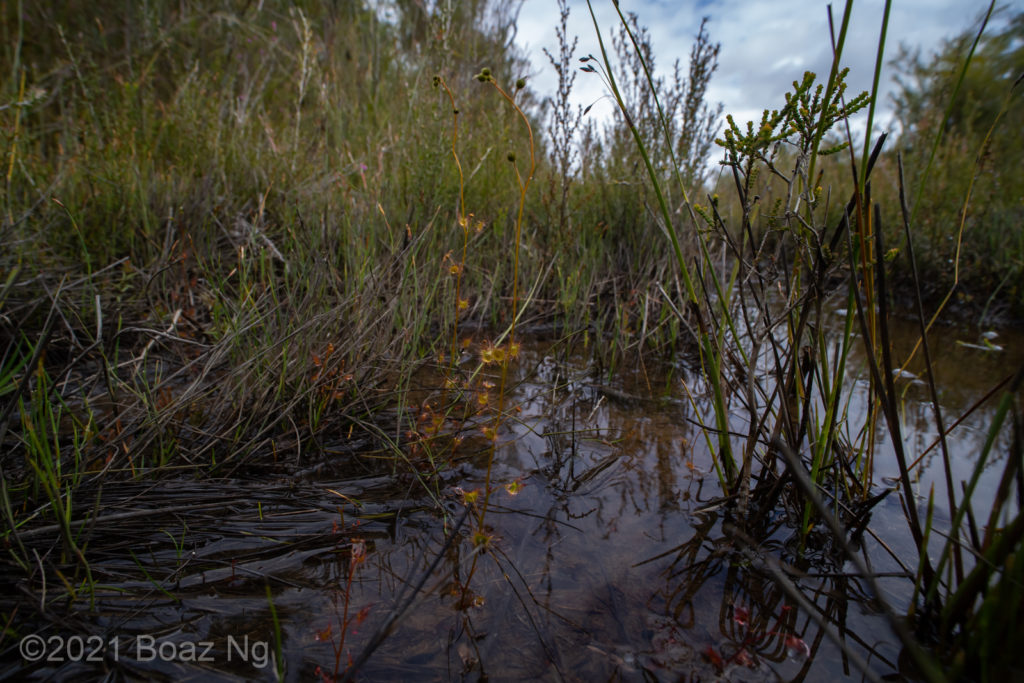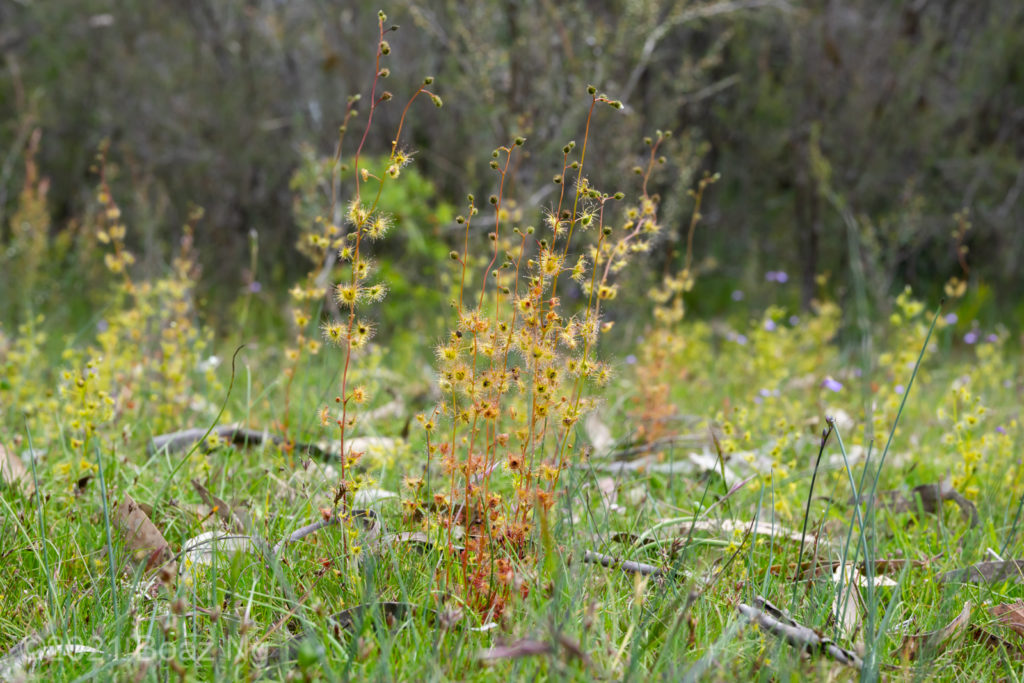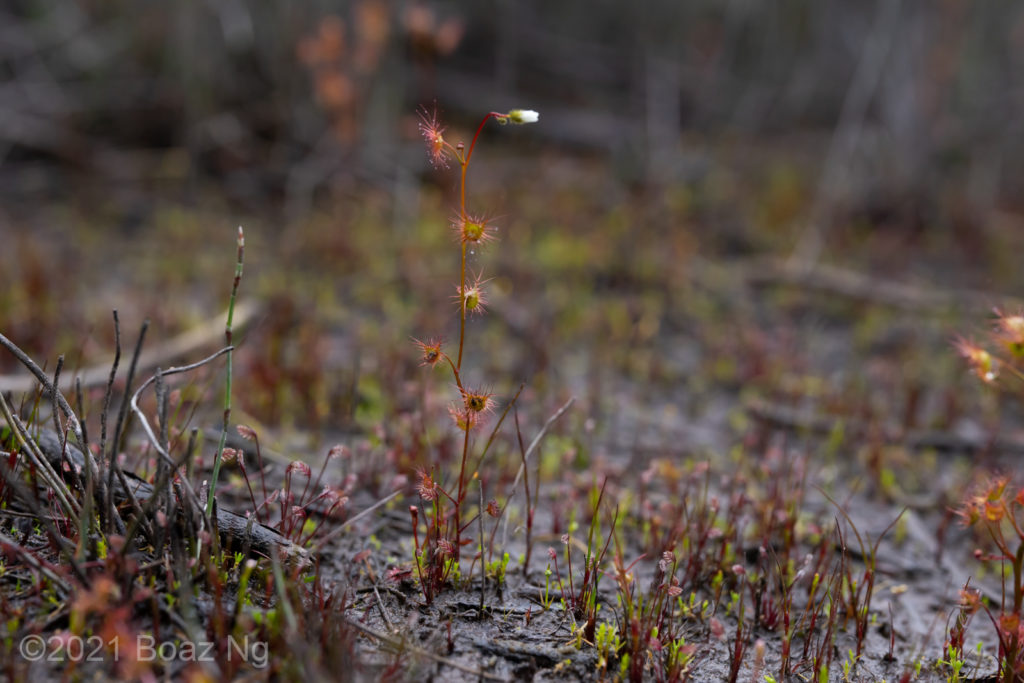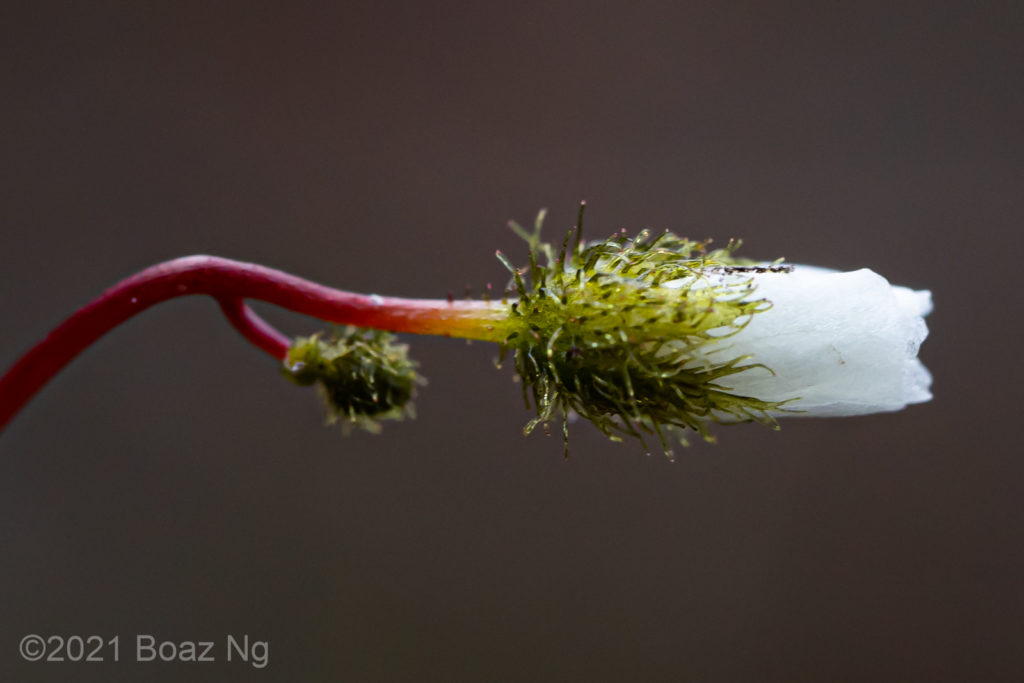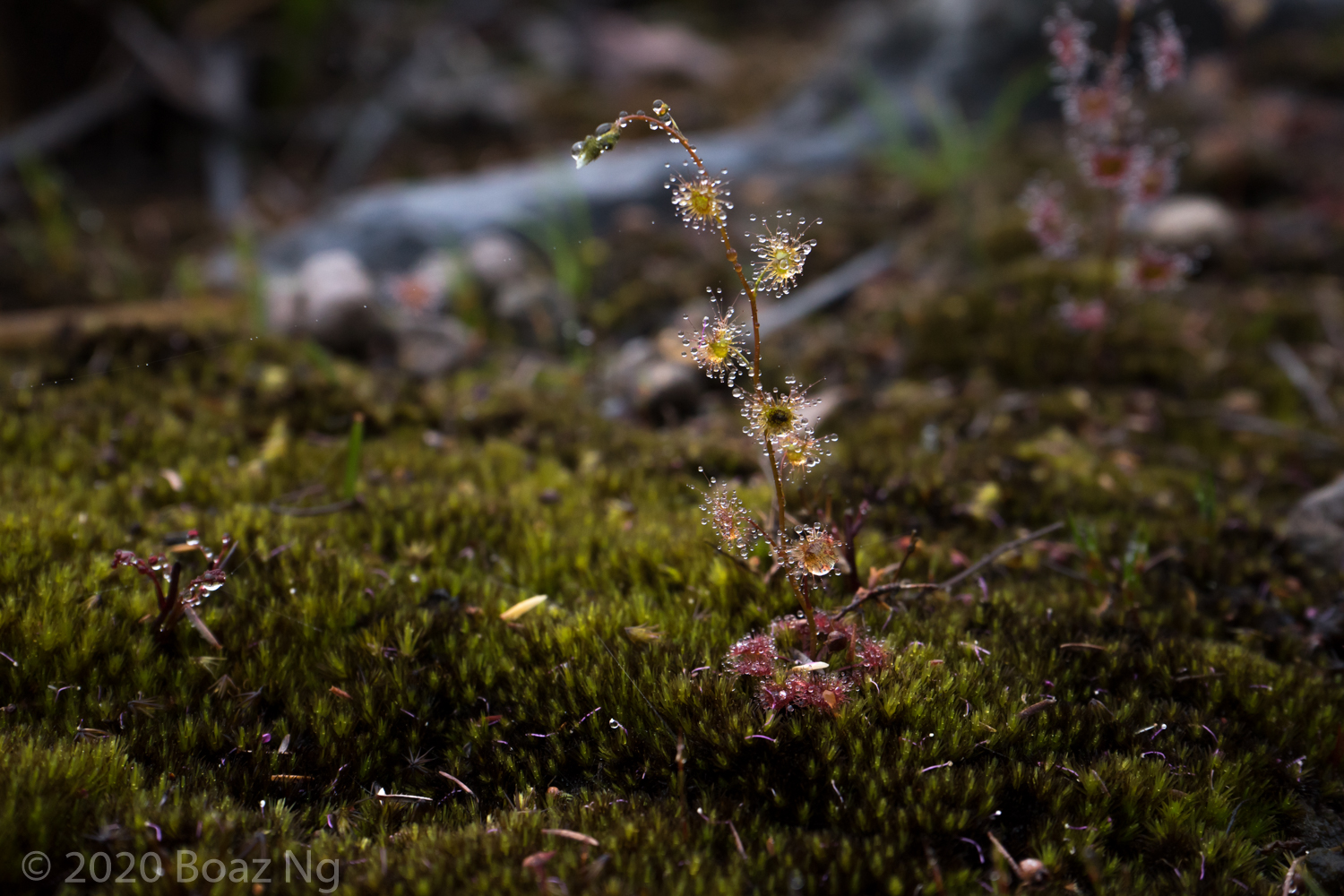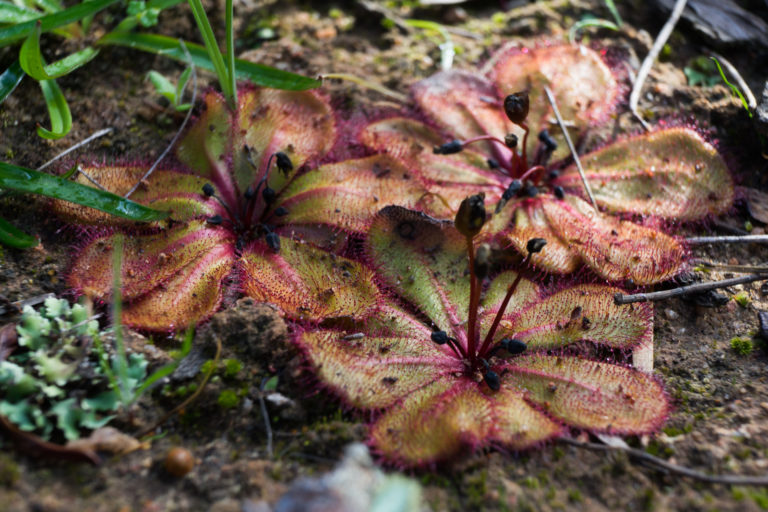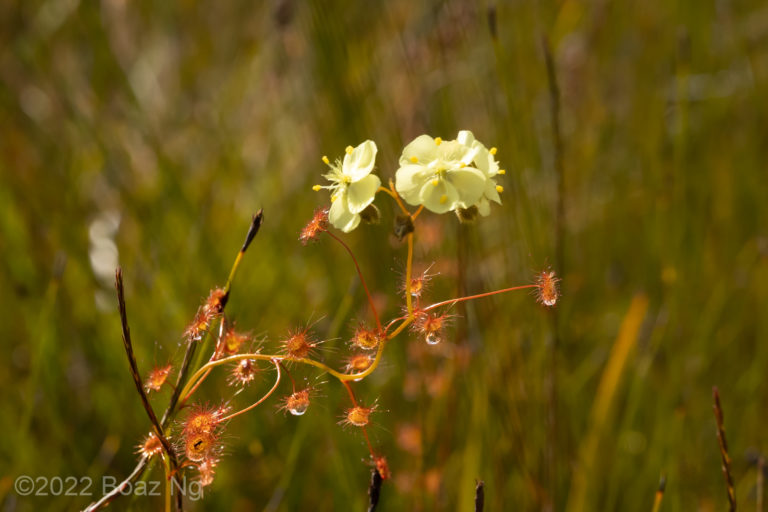Drosera gracilis is an erect tuberous sundew native to eastern Australia. It is a member of the D. peltata complex but is distinguished on the basis of its stature and shape of the seed. The taxonomy of D. gracilis is complex. It was originally described from material collected from the highlands of Tasmania, but the common understanding of the taxon has since grown to include plants from wet lowland regions. I have also found the highland form in the Victorian alps.
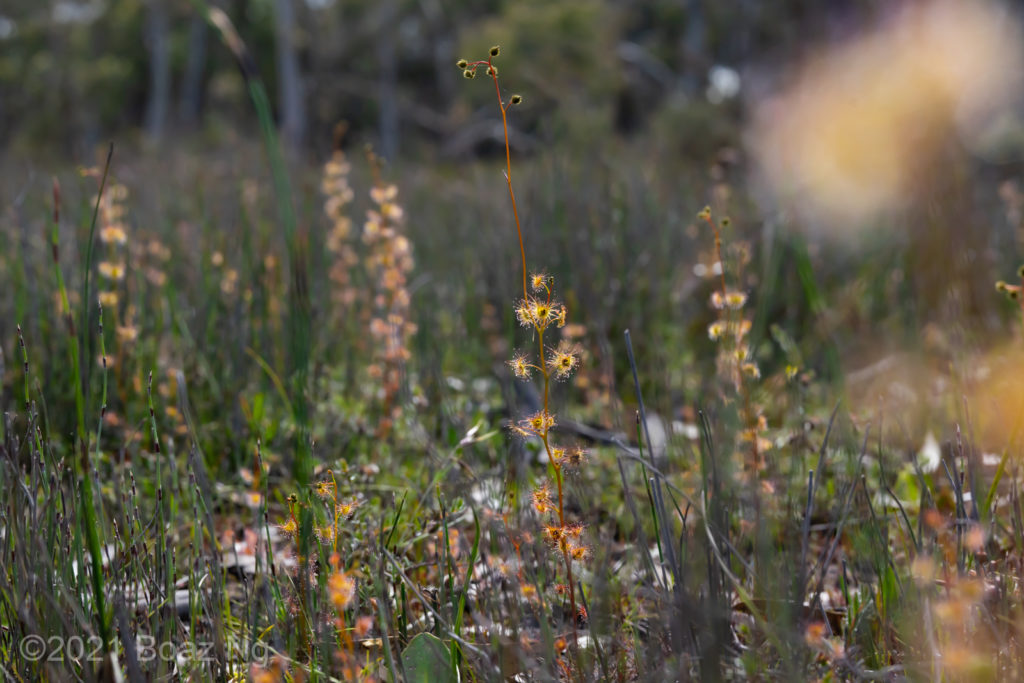
Drosera gracilis, as its name suggests, has a very slender and thin vertical stem that reaches approximately 10-15 cm in height. A full basal rosette is often present and is sometimes retained at anthesis. This rosette, and to an extent the entire plant, is characteristically reddish in colour. The sepals are moderately densely covered in gland-tipped trichomes.
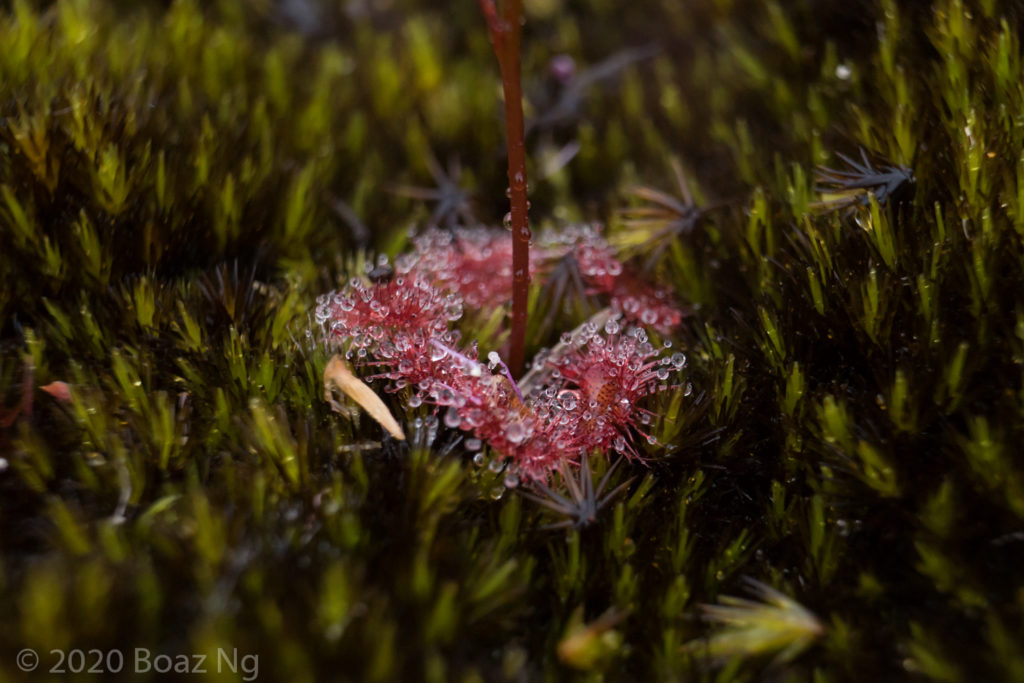
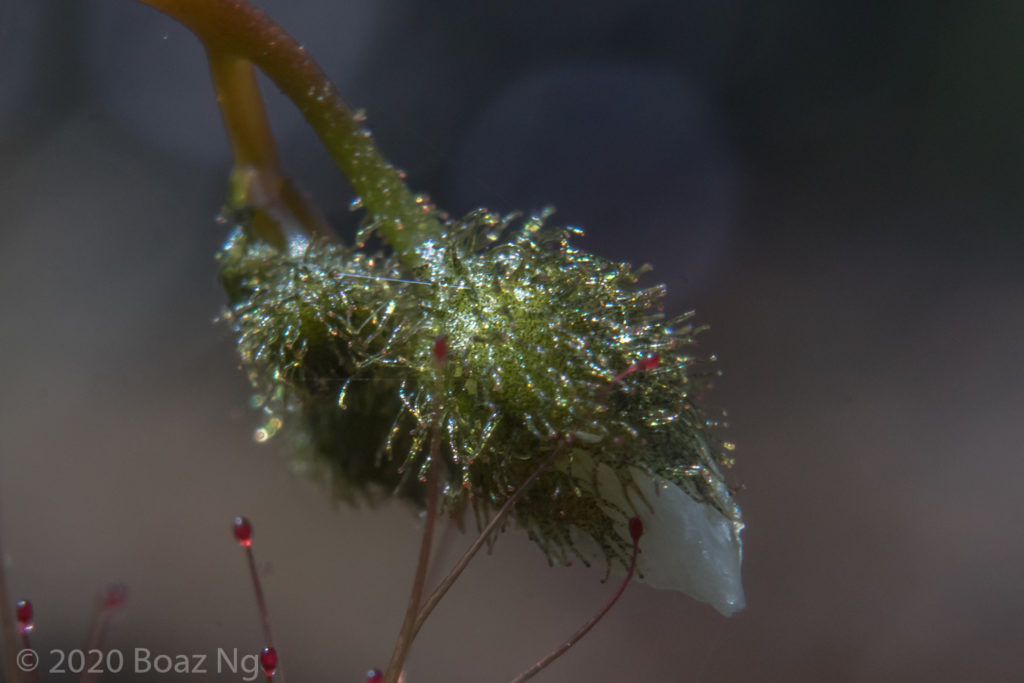
The species is known from a variety of niches, but generally prefers wet habitats such as sandstone seepages, creek beds and swamps. In lowland environments, its growing season spans winter and spring. In alpine environments above the snowline, the plants are summer growing.
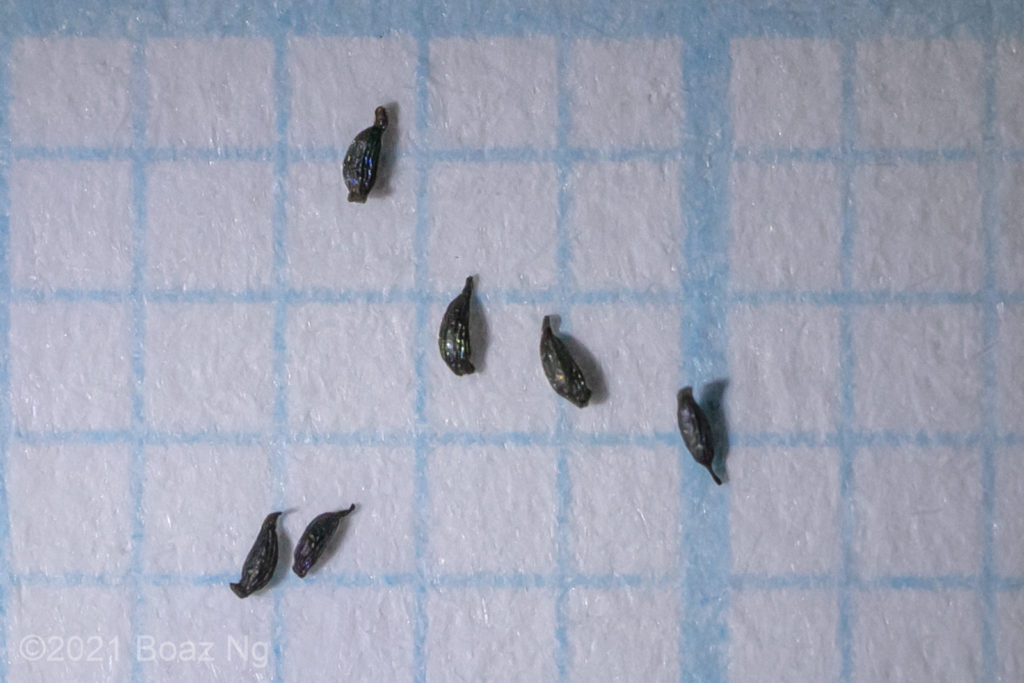
The species is a member of the complicated Drosera peltata complex. It is distinguished from D. auriculata and D. lunata by its hairy sepals. It is distinguished from D. gunniana and D. hookeri by the shape of the seed, which does not bear a lobed protuberance. D. gracilis is most closely related to D. peltata and the exact relationship between the two species warrants further investigation. D. gracilis is shorter in stature and generally retains a strong basal rosette, although similar forms of D. peltata exist. A distinction apparently lies in the shape of the seed, with those of D. gracilis bearing a beak shaped appendage.
